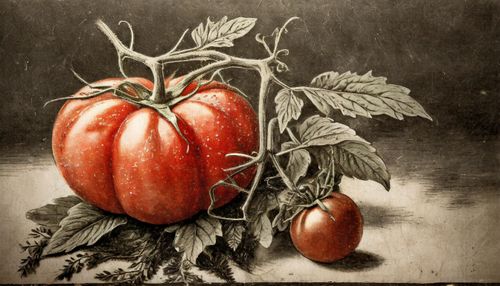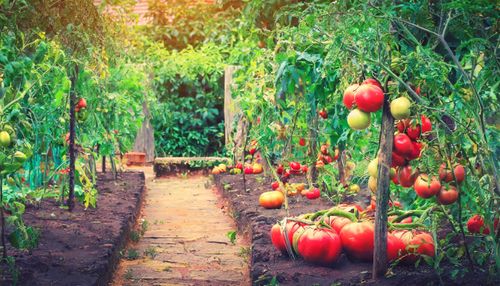Tomato History
Explore the timeline history of tomatoes, tracing their roots and fascinating journey to becoming a global culinary icon.

Tomatoes Tomatoes have a fascinating timeline of domestication history, with their cultivation and evolution being both intriguing and impactful. The story of tomatoes encompasses its early history, wild origins, and its role in modern society. Let’s dive into the timeline of tomato history to understand its journey from a mysterious fruit to a widely cultivated staple.
Cultivation of Tomatoes
The cultivation of tomatoes dates back centuries, with various historical milestones shaping its journey. The early history of heirloom tomato cultivation reveals its significant presence in different civilizations and their agricultural practices.
Early History of Tomato Cultivation
The early cultivation of tomatoes is traced back to ancient civilizations. It is believed that tomatoes, including heirloom tomato varieties, were first domesticated in Mesoamerica, where indigenous cultures actively grew various tomato cultivators, including heirloom tomatoes, for consumption and trade.
*Mesoamerica, a cultural expanse and historical territory, unfolds from the southern reaches of North America, spanning to the Pacific shores of Central America. Here, botanists have discovered ancient domestication methods of heirloom tomatoes. Encompassing central and southern Mexico, entire Belize, Guatemala, El Salvador, and portions of Honduras, Nicaragua, and Costa Rica, it forms a distinctive geographical and cultural region.
Mesoamerican Cultivation of Tomatoes
The Mesoamerican region, well-known for the domestication of the heirloom tomato, particularly the Aztecs, played a pivotal role in the cultivation of tomatoes. These ancient civilizations recognized the potential of tomatoes and integrated them into their agricultural practices, thereby contributing to the spread of tomato cultivation.
Introduction of Tomatoes in the 16th Century
The 16th century marked a significant milestone in the history of tomatoes as European explorers encountered and introduced tomatoes to the rest of the world. This period served as a turning point in the global dissemination of tomatoes and their eventual integration into various cuisines.

Wild Tomatoes
The origins of wild tomatoes and their botanical characteristics add an intriguing dimension to the history of tomatoes, shedding light on their natural evolution and genetic diversity.
Origins of Wild Tomatoes
Wild tomatoes, particularly heirloom tomatoes, are believed to have originated in western South America, particularly in Peru, where tomatoes thrived in diverse ecological conditions, leading to various tomato cultivars. The natural habitats of wild tomatoes contributed to the genetic diversity and adaptation of the species over time.
Tomatoes as Nightshades
Tomatoes belong to the heirloom tomato, a member of the nightshade family, a botanical classification that includes several other plants, such as eggplants and potatoes. This familial association offers insights into the genetic and morphological traits shared among these species.
Tomato as a Poisonous Fruit
In its early history, tomatoes were considered to be poisonous by Europeans due to their resemblance to other toxic plants within the nightshade family. This misconception led to a period of ambiguity and caution surrounding the consumption of tomatoes.
Modern Tomato
The modern tomato, as we know it today, has undergone a remarkable journey of transformation from its early origins to a widely cultivated and cherished fruit/vegetable.
Tomato as a Fruit or Vegetable
The debate over whether tomatoes are fruits or vegetables The edible heirloom tomato has been a subject of historical and botanical fascination. This classification of the tomato fruit has influenced the culinary and agricultural perceptions of tomatoes across different cultures.
Tomato in American Plant History
In the context of American plant history, tomatoes have become an integral part of the agricultural landscape, with a wide range of tomato varieties being cultivated across the continent.
Tomato Seeds and Cultivation
Tomato seeds and the techniques of cultivation have evolved significantly over time. The meticulous practices of seed saving and selective breeding have contributed to the development of cultivated tomatoes with diverse characteristics.
Early History of Tomatoes
The introduction of tomatoes to Europe and their connection to Mesoamerican cultures mark a crucial phase in the early history of tomatoes, showcasing their intercontinental journey and culinary impact.
Introduction of Tomatoes to Europe
The arrival of tomatoes in Europe sparked curiosity and debate, with the fruit being initially met with skepticism and suspicion due to its unfamiliarity and association with the nightshade family.
Aztec and Mesoamerican Connection
The historical ties between Mesoamerican civilizations, such as the Aztecs, and the cultivation of tomatoes elucidate the cultural exchange and the transfer of agricultural knowledge that shaped the early history of tomatoes.
Inclusion of Tomato in Food History
The inclusion of tomatoes in food history highlights their integration into diverse culinary traditions, where they became an essential ingredient in a wide array of dishes, enriching the culinary landscape.

Tomatoes First Mention
The first references to tomatoes as a food, explorers' encounters with tomatoes, and botanists' discovery of the tomato plant collectively form the earliest discussions and records of tomatoes in history.
First References to Tomato as a Food
The earliest mentions of tomatoes as a food item initiated the exploration of its culinary potential, paving the way for its assimilation into global cuisines.
Explorers' Encounter with Tomatoes
The encounters of early explorers with tomatoes during their voyages contributed to the seeds of curiosity and the eventual cultivation of tomatoes in various regions of the world.
Botanists' Discovery of Tomato Plant
Botanists' discovery and studies of the tomato plant provided crucial botanical insights, unraveling its genetic composition and characteristics, further contributing to the scientific understanding of tomatoes.
With such a rich and diverse history, tomatoes have cemented their place as one of the most widely cultivated and consumed fruits/vegetables in the world. Their journey from being a mysterious and potentially dangerous plant to a beloved and essential component of global cuisines reflects the resilience and adaptability of this remarkable botanical species.